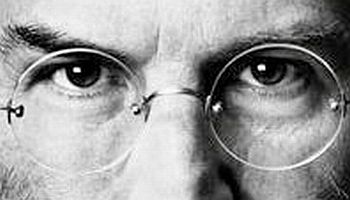Biography Reveals Jobs’ Hands-On Design Approach

Steve Jobs was intimately involved in Apple’s process for coming up with new products, according to a new biography
Walter Isaacson’s new biography of Steve Jobs offers a glimpse into the top-secret design lab for Apple products, in the process revealing a good deal about the working relationship between the former Apple chief executive, who died earlier this month, and his chief designer, Jonathan Ive.
Apple heavily restricts access to that lab, which according to the biography features a bullpen of desks, and a “cavernous main room” with six steel tables filled with works in progress. Beyond that room is a “computer-aided design studio” filled with workstations and machines for creating foam models. Depending on his health, Jobs was a frequent visitor.
Intuitive process
“If we’re working on a new iPhone, for example, he might grab a stool and start playing with different models and feeling them in his hands, remarking on which ones he likes best,” Ive is quoted as saying. “Then he will graze by the other tablets, just him and me, to see where all the other products are going.”
 Gazing at the models arrayed on their steel tables, Jobs could ask questions or make judgment calls about Apple’s product portfolio as a whole. “Much of the design process is a conversation, a back-and-forth as we walk around the tables and play with the models,” Ive added. “He doesn’t like to read complex drawings. He wants to see and feel a model. He’s right.”
Gazing at the models arrayed on their steel tables, Jobs could ask questions or make judgment calls about Apple’s product portfolio as a whole. “Much of the design process is a conversation, a back-and-forth as we walk around the tables and play with the models,” Ive added. “He doesn’t like to read complex drawings. He wants to see and feel a model. He’s right.”
With Jobs gone, some analysts are questioning whether an Apple without his intuition can continue to churn out blockbuster products. “I would be hard-pressed to believe that the products impacting the world in 20 years will be based on Apple’s products of today,” Jagdish Rebello, an analyst for IHS, wrote in a 24 October research note. “The company must come up with new revolutionary products to maintain its lead.”
And for Jobs, product was key: At a key moment near the end of the biography, he suggested that companies need to focus on an “extreme passion for producing great products”. Companies that drift away from that passion, run by salesmen with no idea about product, dip into “decline”. He cited John Akers at IBM and Steve Ballmer at Microsoft as two such salesmen.
Legacy
Before his death, Jobs also expressed concern over whether his “legacy” would keep Apple healthy after he left. “Hewlett and Packard built a great company, and they thought they had left it in good hands,” he said during his last board meeting, according to the biography. “But now it’s being dismembered and destroyed. It’s tragic.”
Apple now depends on chief executive Tim Cook, in conjunction with Ive and other executives, to stay relevant within the rapidly changing tech landscape. Much of that will depend, it seems, on the company’s ability to evolve past a creative process centred on Jobs and his intuition.